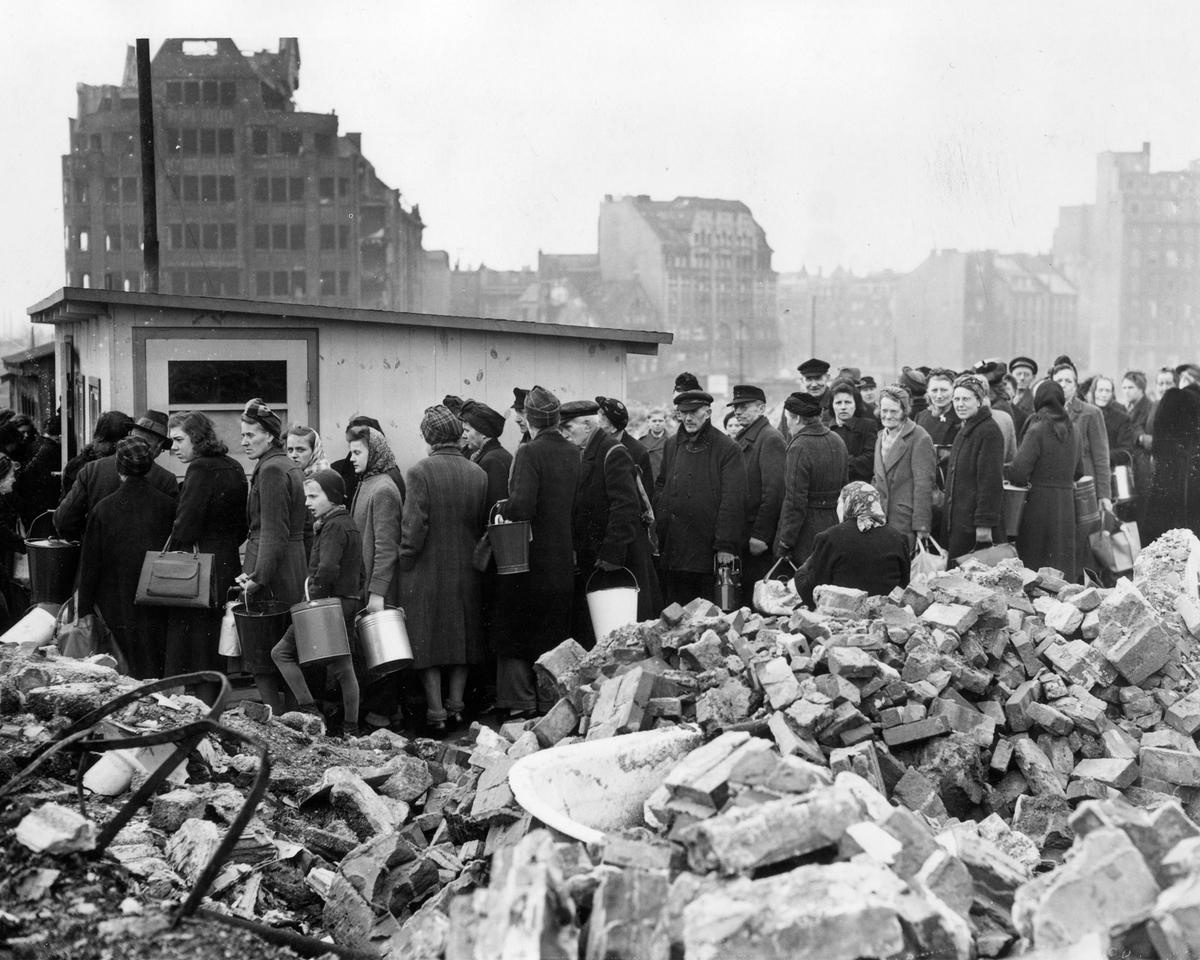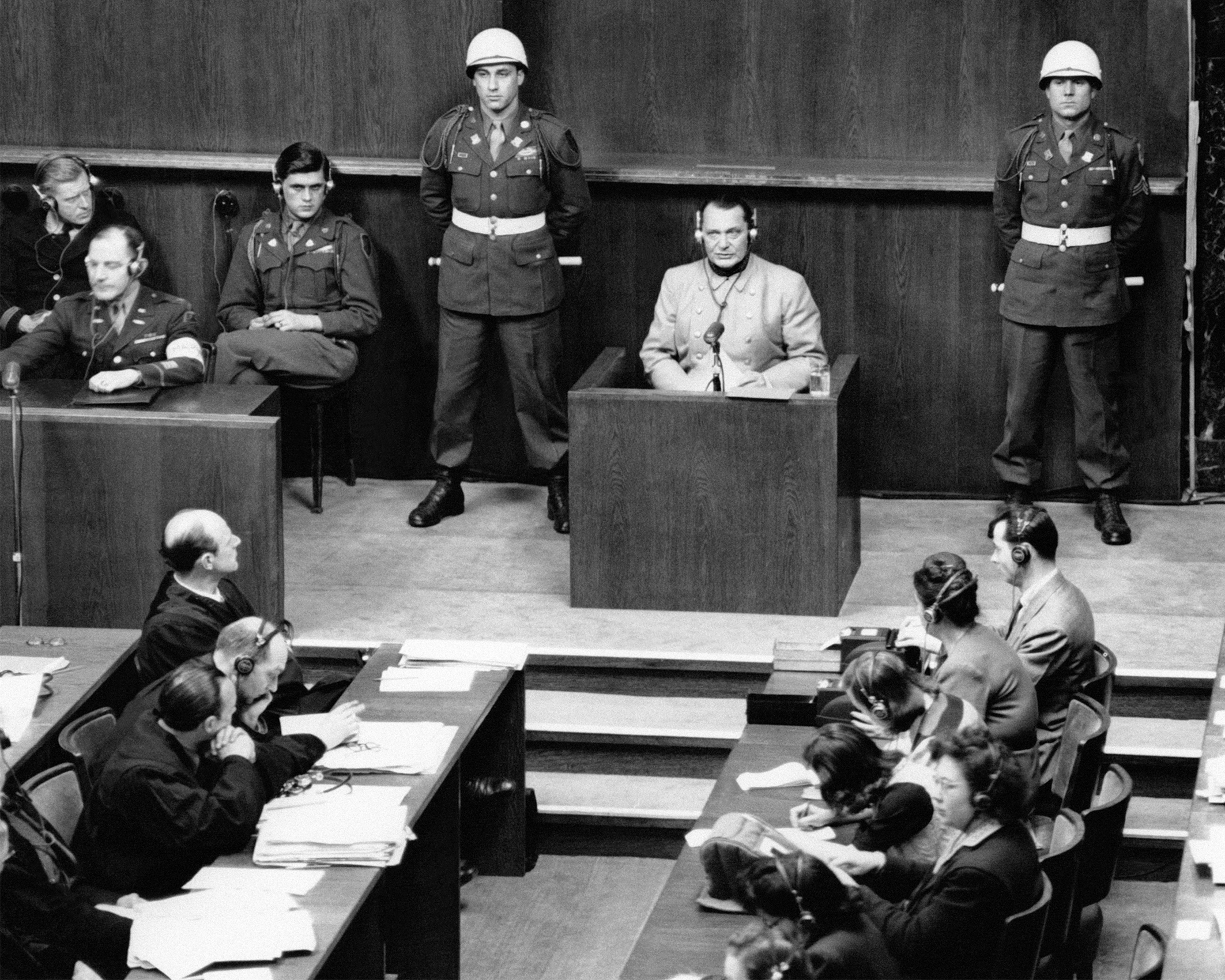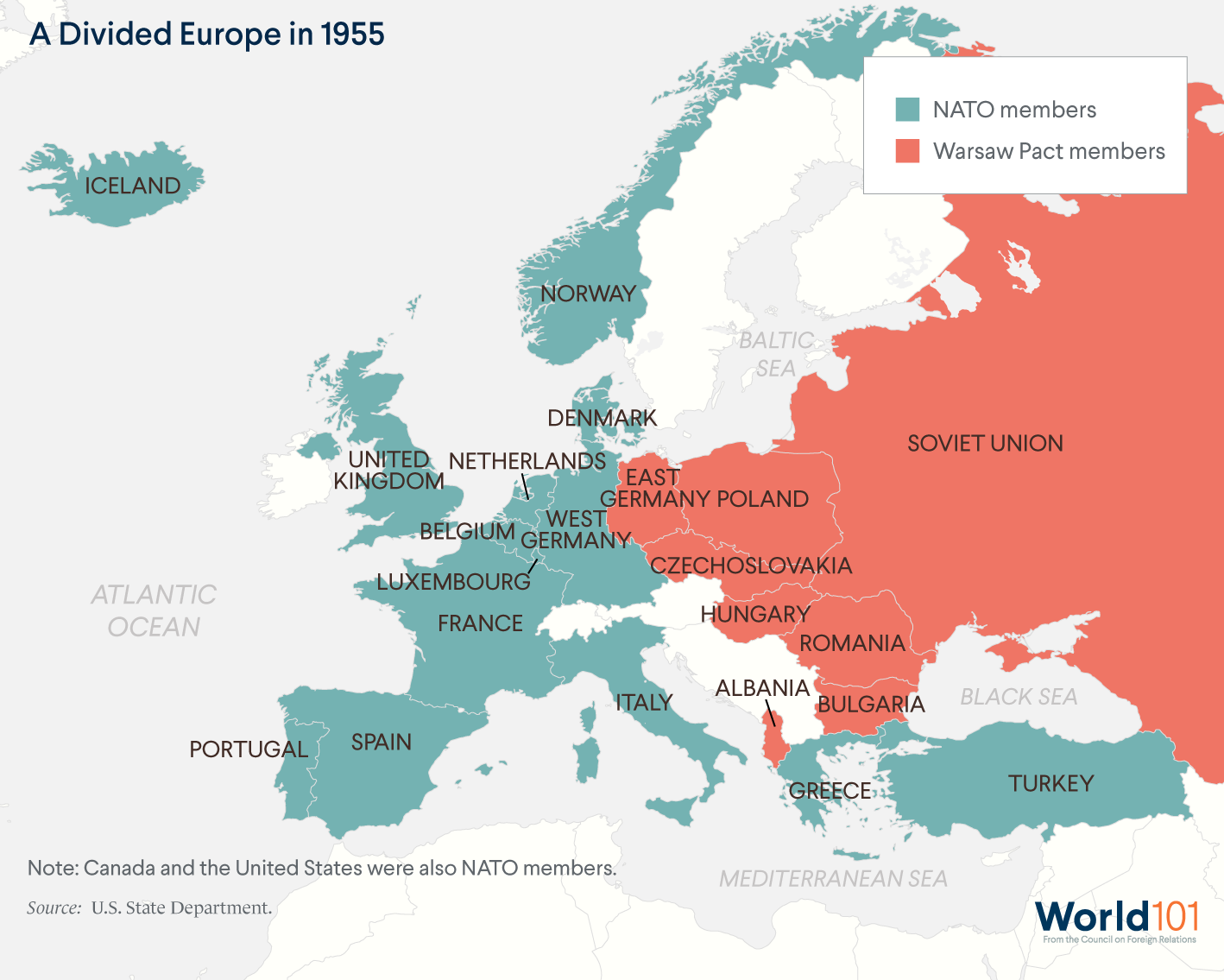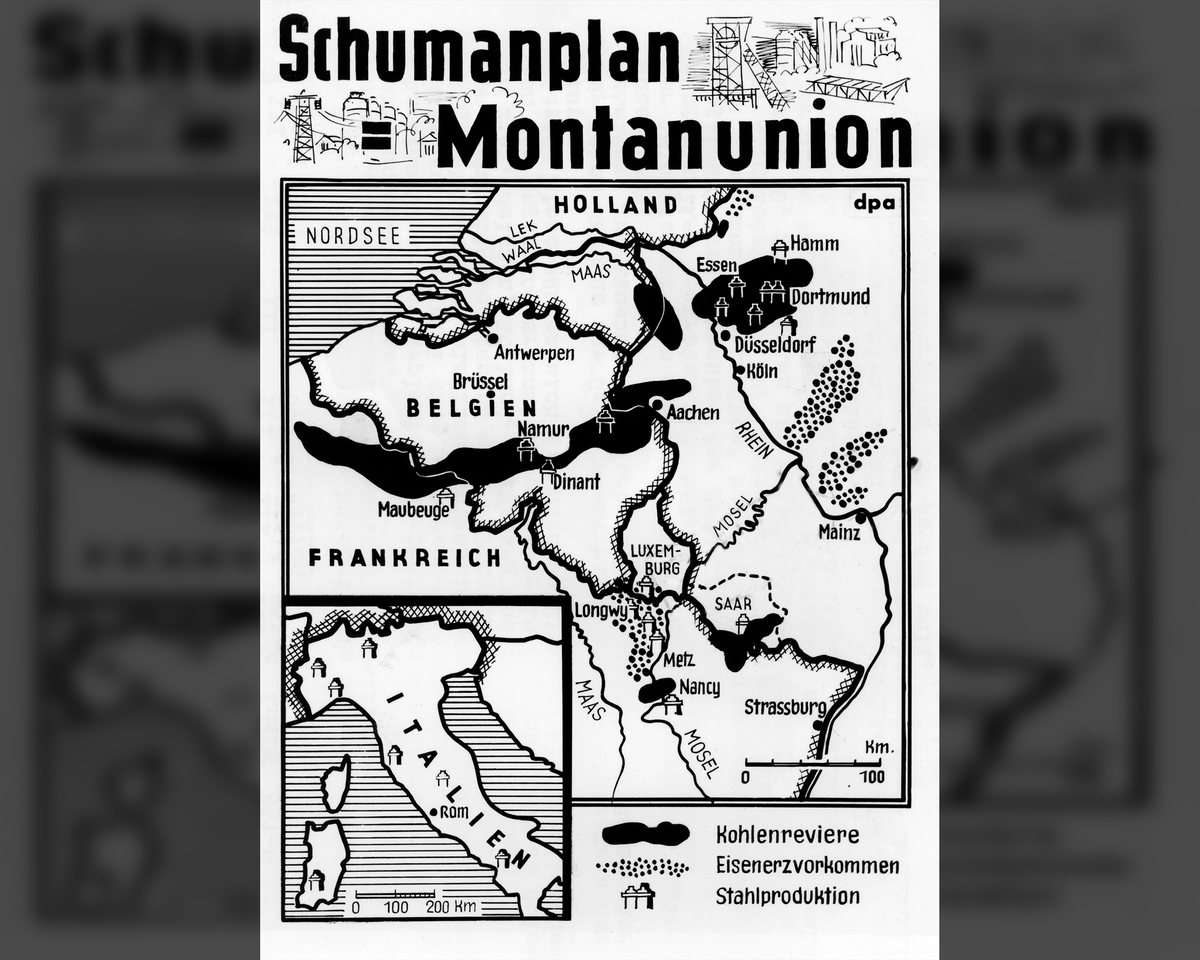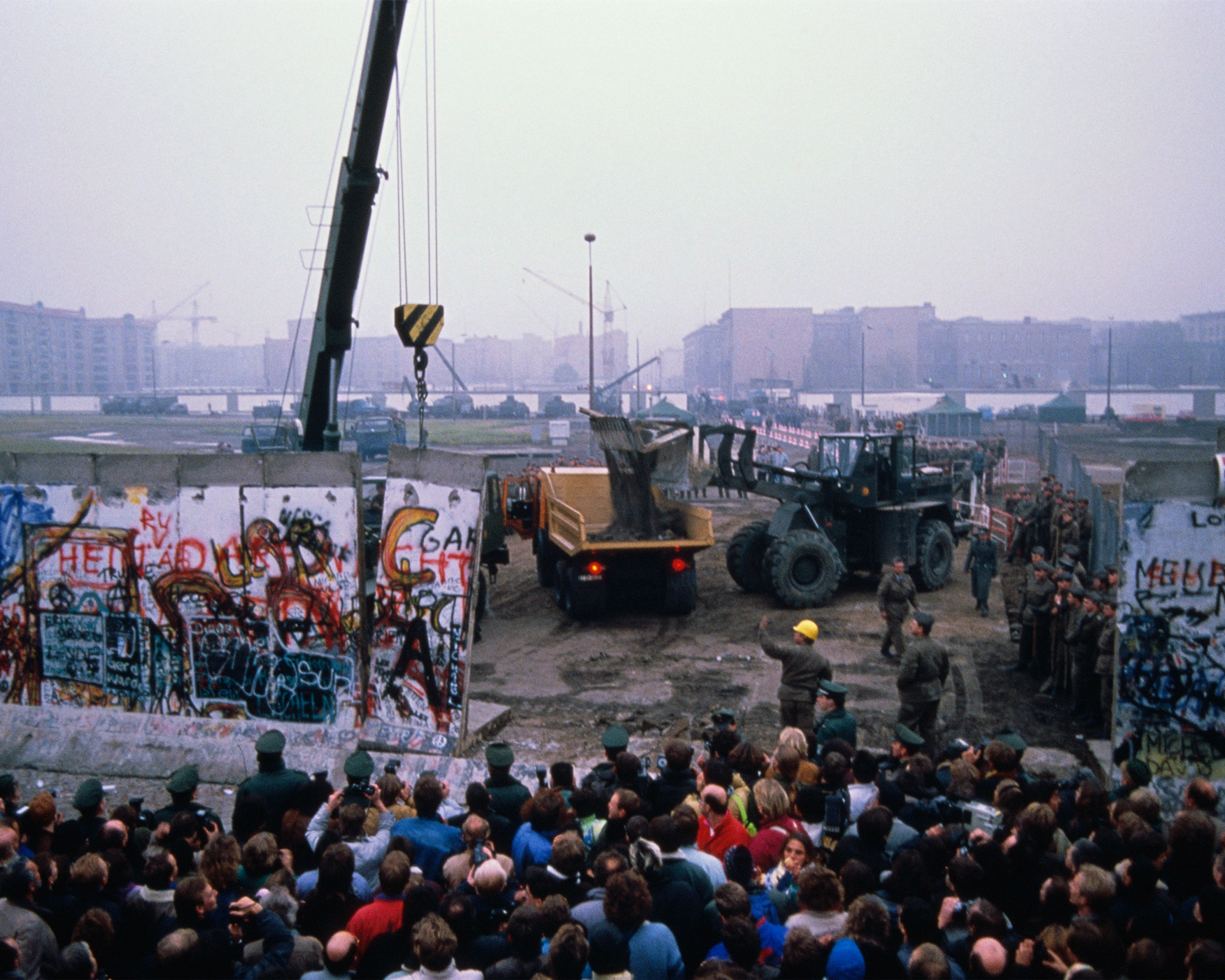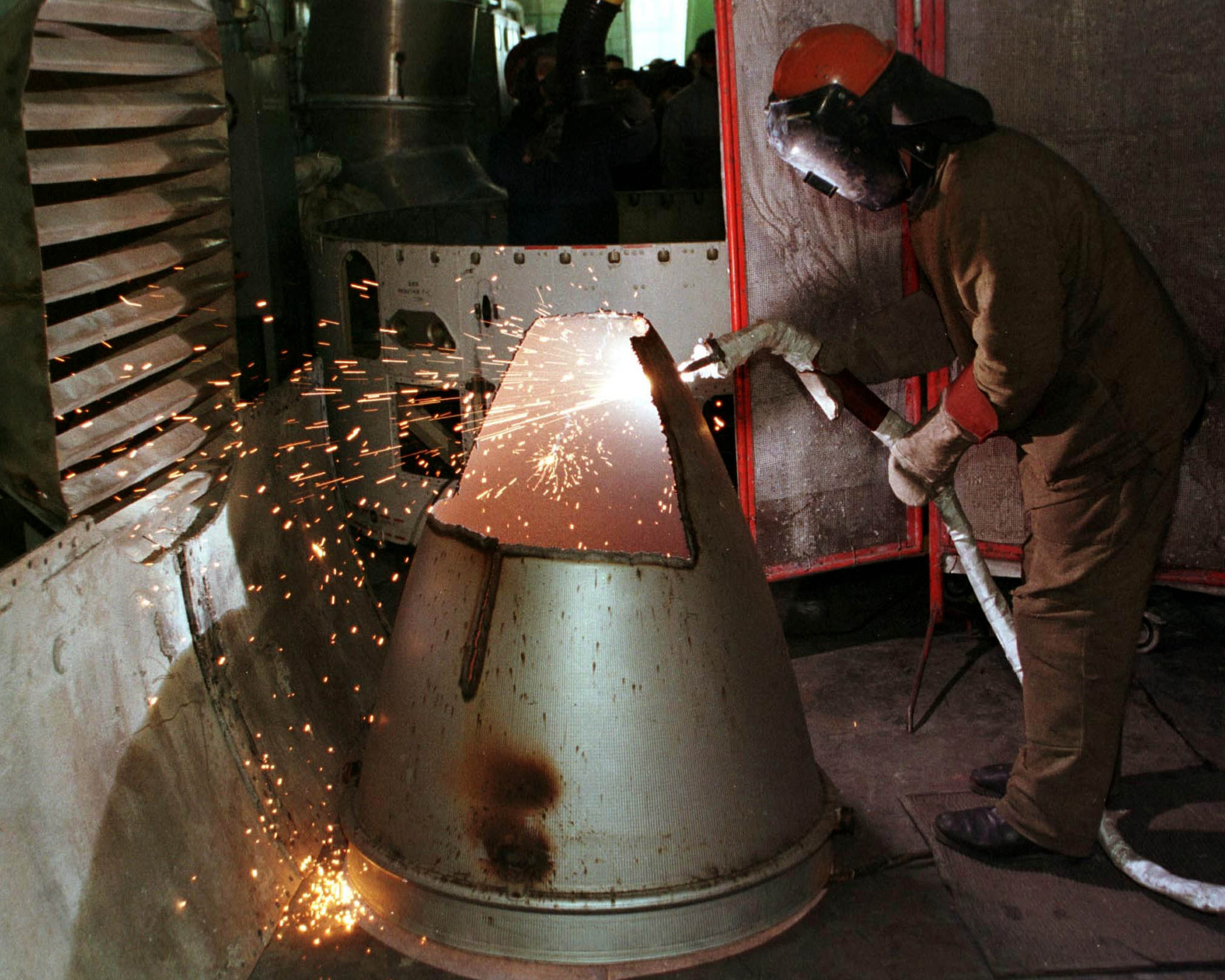Modern History: Europe
For the past seventy-five-odd years, Europe has largely been at peace.
For the past seventy-five-odd years, Europe has largely been at peace. But for much of its history, Europe was at war with itself. Borders shifted as empires rose and fell. For example, since 1461, Sarajevo has been part of nine different empires, kingdoms, states, and countries. Epic campaigns fought over religion, territory, and political power—like the Hundred Years’ War, Thirty Years’ War, and Napoleonic Wars—wiped out huge portions of the population. Sometimes these conflicts led to diplomatic innovations: the 1648 Peace of Westphalia established the modern concept of sovereignty, the principle that countries have the right to control what happens within their borders, and should respect other countries’ boundaries. But after each peace treaty, even one as significant as Westphalia, war broke out again.
Europe Shapes World for Four Hundred Years
Beginning in the fifteenth century, competition between leaders in Europe and the search for resources and new markets drove European powers to colonize land overseas. Empires including the British, Dutch, French, Portuguese, Russian, and Spanish controlled territory across every region of the world. In fact, from 1492, when a Spanish expedition landed in the Americas, to the start of World War I, Europe, accounting for just 8 percent of global land mass, controlled more than 80 percent of the world. Europeans exported ideas about government and religion, built infrastructure and created trading routes, and introduced new technology to the Americas, Africa, and Southeast Asia. Europeans profited immensely from colonization, which came at the direct expense of colonized communities and was responsible for violence, enslavement, and forced religious conversion, resulting in the destruction of entire civilizations.
World War I Devastates Europe
In the lead–up to World War I, Europe, divided into two rival alliances, maintained an uneasy peace. The spark was lit in 1914, when a Serbian terrorist assassinated the heir to the throne of Austria-Hungary. The conflict reverberated throughout Europe as countries rushed to defend their allies. Fighting was gruesome, characterized by nineteenth–century battle tactics with twentieth century weapons; generals ordered charges into hailstorms of machine-gun fire and gas attacks in trenches. The toll was catastrophic: at least 8 million soldiers and unknown millions of civilians (estimates range from 5 million to 10 million) died. Four European empires—Ottoman, Russian, German, and Austro-Hungarian —collapsed, creating a number of fledgling countries with new, sometimes arbitrary borders and unstable economies. The exhausted survivors had an overwhelming sense that this war, surely, was “the war to end all wars.” But the peace agreement, the Treaty of Versailles, imposed war debts on Germany and forced it to accept all responsibility for starting the conflict. Meanwhile, the United States, which suffered modest losses compared to Europe, retreated back across the Atlantic instead of leading the charge on international cooperation, all of which created instability rather than resolution. World War I did not end Europe’s wars.
Russian Revolution and the Rise of the Soviet Union
While World War I was raging, a separate conflict erupted in Russia. In 1917, millions of Russians overthrew their centuries-old monarchy and soon established the world’s first socialist country. The Union of Soviet Socialist Republics (USSR), or the Soviet Union, brought together Russia and fourteen other ethnic republics previously ruled by the Russian Empire. From Moscow, the Soviet Union exerted its influence over a half-dozen nominally independent countries in Eastern Europe that came to be known as Soviet satellite states. In the Soviet Union, the government controlled all major resources like land and steel; although education and industrialization spread rapidly, political repression was brutal. From the 1920s to 1953, millions of civilians were executed, sent to a system of labor camps known as the Gulag, or starved in forced famine under the rule of Soviet leader Joseph Stalin. All the while, the Soviet Union solidified its role as a global superpower.
Fascism Grips Europe Between World Wars
In 1936, General Francisco Franco launched a bloody coup against Spain’s young democratic government and, following three years of civil war, ruled as dictator. Franco joined a string of strongmen leaders in post–World War I Europe, all of whom amassed power by violently suppressing opponents and dismantling democratic institutions like free elections and an independent press, characteristics of an ideology that came to be known as fascism. The continent’s first fascist leader, Benito Mussolini, made himself dictator of Italy in 1925; Adolf Hitler followed in 1933. Their messages emphasizing national strength, and, in Hitler’s case, racial hierarchy, resonated in some countries where the unsettling new forces of globalization, capitalism, immigration, and agricultural technologies collided with the physical and economic devastation of war. But many Europeans did resist fascism, as evidenced by the bitter Spanish Civil War. Thousands of foreign volunteers flocked to Spain to fight on the side of the republican government and defend democracy. It was, in a sense, the first battle of World War II—but this time, fascism won.
World War II Strips Europe of Global Supremacy
After World War I, Adolf Hitler’s anti-Semitic, fascist Nazi party began taking increasingly violent measures against Germany’s Jews: revoking their citizenship, denying them basic civil rights, burning synagogues, and attacking and killing the Jewish people. Meanwhile, Hitler believed the German people (the so-called Aryan race) were entitled to greater living space, or Lebensraum, in Eastern Europe, at the expense of the non-Aryan populations who lived there. In 1939, he invaded Poland—Nazi Germany’s first step in a plan to conquer Europe. Countries that had spent the past decade avoiding the growing reality of another major war were now involved in a global conflict of an even greater scale than the previous world war. World War II would become the deadliest conflict in human history; an estimated sixty million people—3 percent of the world’s population—died. Both the Axis powers (Germany, Italy, and Japan) and the Allies (France, Great Britain, the Soviet Union, and later, the United States) targeted civilian populations, leveling cities including Dresden, London, and Tokyo. Germany surrendered in May 1945, bringing an end to the war in Europe. World War II officially ended several months later, after the United States dropped two atomic bombs on Japan, forever changing the stakes of war. Europe entered the twentieth century as the premier global power but emerged from World War II subordinate to the new superpowers: the United States and the Soviet Union.
From the Holocaust, Human Rights Canon Emerges
A most horrific chapter of World War II was the Holocaust, the state-sponsored killing of over six million Jews. From 1941 to 1945, Germans and their allies systematically rounded up European Jews and others deemed outside the Aryan race (including the Roma, Slavs, homosexuals, and the intellectually disabled). They were either shot en masse or sent to camps across Germany and Poland with names that have become synonymous with death—Auschwitz, Buchenwald, Treblinka—where the majority were killed in gas chambers. Called the “Final Solution to the Jewish Question” by the Nazis, this policy of annihilation was driven by Hilter’s anti-Semitic ideology. After the war, some Nazi officials who helped carry out the Holocaust were charged with crimes against humanity. Meanwhile, terms like genocide emerged as part of a canon of human rights law designed to ensure that history, in this case, would not repeat itself.
How the Cold War Froze Over
After World War II, the Soviet Union emerged as a major power with clear territorial ambitions, backing a communist coup in Czechoslovakia in 1948, for example, that alarmed the West. The nuclear-armed United States agreed to create a collective defense alliance, resulting in the North Atlantic Treaty Organization (NATO), between the United States, Canada, and ten European countries, in 1949. Germany, meanwhile, was divided between a Soviet-controlled East and an American-guided West, ultimately becoming two countries. In 1955, NATO admitted West Germany as a new member. In response, the Soviet Union created its own regional alliance, the Warsaw Pact, which included the Soviet satellite states in Eastern Europe. In practice, this divided Europe between an American, nuclear-backed security guarantee (a “nuclear umbrella”) in the west and a Soviet one in the east. NATO’s military doctrine was “massive retaliation”; an attack on a NATO member would result in a large-scale nuclear response. A direct attack never occurred, but the Cold War often erupted into “hot wars” between proxy forces around the world, creating arenas for the two superpowers to come into conflict in countries like Korea, Cuba, Vietnam, and Afghanistan. Europe itself was fairly stable; while conflicts did flare up, like when the Soviet Union invaded Hungary in 1956 and Czechoslovakia in 1968, the high-stakes nature of nuclear war kept things mostly cold.
Europe Tries Different Approach to Lasting Peace
European leaders knew that in order to build a peaceful Europe and forge a united front against the Soviet Union, they had to reintegrate West Germany economically. But given the enduring trauma of World War II, a strong Germany still inspired fear, especially in its next door neighbor and historical rival, France. In 1950, France’s foreign minister proposed a simple solution: France and Germany could share resources, specifically the coal and steel industries in the region between the two countries. By setting up a common market, a kind of trade bloc in which countries agree to remove most barriers to trade (like tariffs), the European Coal and Steel Community created economic benefits for any European country interested in joining. (Ultimately, it had six members.) More importantly, it would make going to war—preparations for which depended on coal and steel for weapons and ammunition—simply too expensive and impossible to plan for covertly. This economic union, the first step to European post-war integration, was designed to create a lasting peace and was the forerunner to the European Union.
Soviet Response to Chernobyl Nuclear Disaster Hints at New Era
On April 26, 1986, firefighters rushed to the Chernobyl nuclear power plant in Ukraine. A reactor had exploded, killing at least thirty emergency workers and exposing five million people to the effects of atomic fallout, as radioactive particles were carried into western Europe and Scandinavia. Days went by without an official acknowledgement of the disaster, a textbook Soviet response. But the 1980s was a decade of change in the Soviet Union. When he became leader, Mikhail Gorbachev was twenty years younger than his three predecessors, all of whom were born before World War I, and he believed the Soviet Union, with its stagnant economy, needed to reform. Gorbachev made a public statement regarding the crisis and called for foreign assistance, a major break from previous leaders. By 1989, the Soviet Union held elections, introduced free speech reforms known as glasnost, and backed down in the Cold War, halting Soviet missile deployments. Gorbachev tried to reform the Soviet Union to strengthen—not dismantle—it. Targeted changes eventually led to more sweeping ones, as the authoritarian system proved too inflexible to bend without breaking.
Fall of Berlin Wall Signals End of Soviet Union
After World War II, Germany was divided into two, as was the capital, Berlin. The Berlin Wall fenced in West Berlin, a democratic pocket deep within East Germany, from 1961 to 1989. The wall was imposing: the section dividing Berlin was almost twelve feet tall and 27 miles long, reinforced with barbed wire, spikes, and landmines, and under constant surveillance. It was both an effective deterrent (more than one hundred people died trying to escape to West Berlin) and a powerful symbol of a divided Germany—and a divided Europe. As the Soviets relaxed oversight of their satellite states in the mid-1980s to focus on domestic reforms, Hungary opened its border with Austria, creating a route to the West that attracted thousands of East Germans. Meanwhile, East Germans began protesting against their Communist government. On November 9, 1989, officials abruptly announced the end of travel restrictions for East Germans, and thousands rushed to the Berlin Wall. In the weeks that followed, regime changes swept through the Soviet satellite states of Czechoslovakia, Romania, and Bulgaria with no pushback from Moscow; eleven months later, Germany was reunified. The democratic momentum in Soviet satellite states, combined with Gorbachev’s political reforms, destabilized Communist control within the Soviet Union and contributed to its eventual collapse in 1991, marking a swift end to the Cold War, a conflict that had endured for almost fifty years.
Nuclear Risks Complicate End of Cold War
Western leaders celebrated when the Soviet Union abruptly ended in 1991. But its collapse presented a new challenge: with Moscow in turmoil, it was unclear what would become of the approximately thirty-nine thousand nuclear weapons that Russia and former Soviet countries controlled. U.S. and European leaders wanted to limit the number of countries in control of such weapons and to ensure that the weapons did not end up in the hands of terrorists. Ukraine, a former Soviet republic, held four thousand nuclear warheads—the world’s third-largest arsenal at the time. In exchange for a pledge from Russia, the United Kingdom, and the United States to respect Ukrainian sovereignty and borders, the country agreed to transfer its warheads to Russia for disassembly, a significant diplomatic achievement. However, in 2014, Russia violated this pledge by invading Ukraine and annexing Crimea.
NATO Expands Its Mandate Following Cold War
At the end of the Cold War in 1991, NATO faced the question of whether it should continue to exist after the collapse of its principal adversary, the Soviet Union. Rather than retire one of history’s most successful military partnerships, NATO officials reimagined the group’s mission. NATO would become a military coalition willing to confront new challenges beyond Europe, its traditional theater of operation. The first test of this mandate came when a bloody ethnic conflict erupted in Yugoslavia in the early 1990s. The alliance intervened in the country’s civil war amid reports of ethnic cleansing. For the next thirty years, NATO would not only operate strictly defensively in Western Europe, but also deploy to missions well beyond the continent, in Afghanistan, Iraq, Libya, and elsewhere.
Ever-Closer Union Looks Beyond Coal and Steel
As Europe reimagined its security alliance, it also expanded its central economic organization. In 1967, the six-member European Coal and Steel Community evolved into a larger organization, the European Community (EC). And in 1992, the EC became a full-fledged economic and political union, known as the European Union (EU). The Maastricht Treaty, which created the EU, laid the groundwork for a common European currency, the euro—the culmination of European economic integration. In addition to economic goals, the EU worked to secure “four freedoms” for its members: free movement of people, goods, services, and money. It set up the Schengen Area so that EU citizens could travel without passports, and created a pathway for other European countries to join the EU, forging an ever-closer union. One politician described this new EU mandate as the “bicycle theory of the European Union”: integration ought to keep moving forward or the EU would risk losing momentum and falling over. That was the plan, and at the close of the twentieth century, it appeared to be working.




